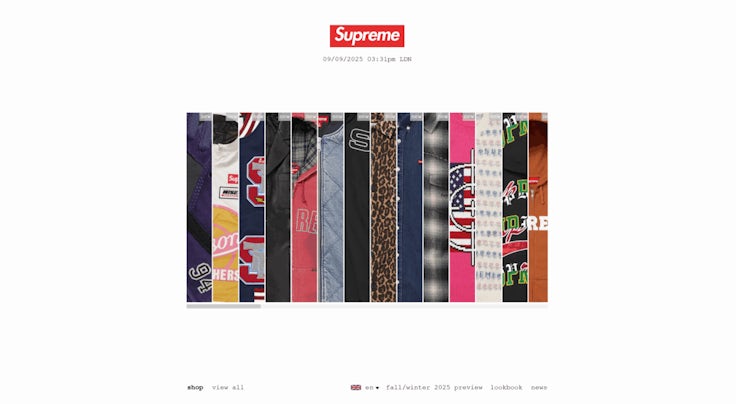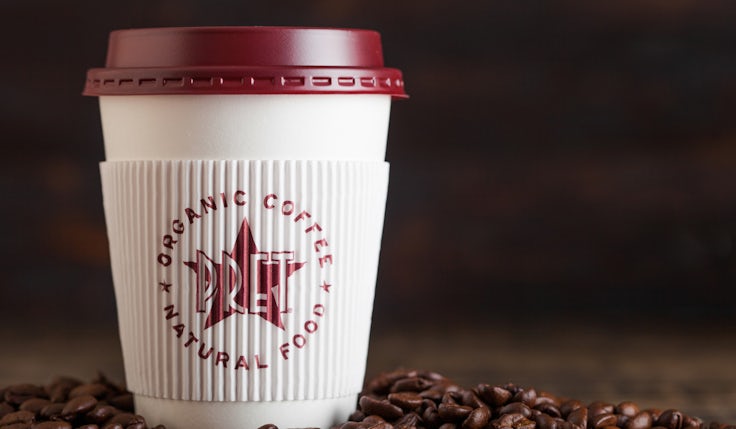An effectiveness case for designing distinctive online shopping experiences
Ecommerce sites often stick to boring templates, but there’s clear evidence for the commercial benefits of making them stand out from the crowd.

Ecommerce brands are missing a trick. In an attempt to deliver ‘best-practice’ user experiences, most online stores follow a narrow set of design conventions that create a generic sense of sameness amongst consumers.
But studies into marketing effectiveness suggest this approach could be costing businesses dearly – and that there are commercial dividends for brands who dare to design far more distinctive ecommerce experiences.
Let’s take a look.
Ecommerce platform as brand touchpoint
Starting at the beginning: research by Byron Sharp and the Ehrenberg-Bass Institute shows that brands grow by increasing their mental and physical availability. That means being the easiest option for a customer both to think of and to get hold of when they’re in a buying situation.
Whilst ecommerce marketers invest huge sums to drive traffic and achieve the goal of physical availability, they too often ignore the opportunity each website session presents to build the memory structures that increase mental availability.
Because, even on the highest-converting sites, over 90% of visitors will leave without making a purchase.
Marketers in ecommerce brands should be making sure that, even if they haven’t closed that sale, they haven’t lost the chance to leave a lasting impression.
Over 90% of visitors will leave without making a purchase.
As the Ehrenberg-Bass Institute’s Jenni Romaniuk’s work shows, it is through the consistent and repeated use of a small number of distinctive brand assets (range of sensory stimuli like colours, logos, characters, jingles) applied across every touchpoint that brands build equity.
And an ecommerce site is not just any old touchpoint. Unlike ad platforms like TikTok, Instagram or YouTube, where your brand is just another piece of content on an infinite feed, ecommerce marketers can shape every aspect of a visitor’s experience – the way it looks, sounds and reacts – to create meaning.
We should be thinking about how we can optimise that experience for both immediate sales and the creation of long-term brand value.
For an example of how this balance can be executed beautifully, look at CompareTheMarket. It has woven its distinctive brand assets into the website: not just as a piece of decoration, but as a way to frame its product discovery journey in a way only it can.

Distinctiveness and the ‘messy middle’
Distinctiveness in ecommerce design doesn’t just have a long-term brand benefit, it provides marketers with an advantage as they fight for immediate sales.
As shown in Google’s 2020 ‘Messy Middle’ research – and updated this summer in Brainlab’s ‘The Three Faces of Modern Search’ – the modern shopper journey is chaotic and non-linear.
Consumers combine search engines, AI assistants, social media channels, publishers, online marketplaces and brand websites to explore and evaluate brands before deciding which purchase to make.
With multiple browser tabs open and a wide range of options in front of them, research shows that shoppers rely on a range of mental shortcuts to avoid feeling overwhelmed and make decisions quickly.
In his book The Choice Factory, Richard Shotton breaks down those behavioural biases and how marketers can tap into them.
High on his list is the ‘Von Restorff Effect’, or Distinctiveness Bias, which shows that people are more likely to notice and remember things that stand out from their surroundings.
Distinctiveness doesn’t just make a brand more memorable during a customer’s purchase journey, it can help to make it more trustworthy, too.
In the context of the messy middle, this means that shoppers are more likely to remember brands that merchandise products in original or imaginative ways, as they will stand out from the endless aisle of (mostly identikit) ecommerce options available to them.
But distinctiveness doesn’t just make a brand more memorable during a customer’s purchase journey, it can help to make it more trustworthy, too.
Fascinating research across the Lazada ecommerce marketplace – a big player across much of South East Asia – shows that brand personality in an online buying situation can have a significant positive impact on brand loyalty and likelihood to purchase.
And this makes intuitive sense. Like in our human relationships, we trust brands that behave consistently over time and place.
A brand that has a strong personality in its advertising and communications but then changes tone and style once a shopper gets closer to making a purchase is less trustworthy than one which maintains its distinctiveness throughout the journey.
Look at streetwear brand Supreme, which takes its achingly-cool, minimalist aesthetic into its online store, with product listing pages and product detail pages unlike any other.

The false dichotomy of brand vs UX
I believe the reason that even the most distinctive brands end up with cookie-cutter sites is the misconception amongst marketing and design teams that ‘branding’ gets in the way of good UX, by somehow distracting customers and thereby lowering conversion rates.
The goal of distinctiveness has been sacrificed on the altar of a ‘frictionless’ digital experience.
Our own research at true suggests that the opposite might the case.
In our 2024 whitepaper ‘The Value of Emotion in Ecommerce’, we used AI facial recognition software to study the emotional reactions of customers interacting with a range of different ecommerce sites.
We found that digital experiences that used more distinctive and original design elements – interesting uses of colour, motion, sound, micro interactions and copy – provoked stronger emotional reactions in visitors.
Our results suggested that, as long as those emotive design elements were combined with brilliant UX basics, there was an opportunity to improve performance through distinctiveness.
Rather than getting in the way, it seems as though the ‘branding layer’ of the design can complement the user experience by heightening a visitor’s emotional state and thereby increasing their level of engagement with products.
Ikea’s ecommerce platform demonstrates this perfectly. Using quirky photography, a wide range of interactive components, a playful tone and interesting content, it feels unmistakably Ikea – distinctive in a way that draws you into, rather than distracts from, the product.

What this means
Ecommerce teams should see themselves as brand storytellers, not digital shelf-stackers. The application of distinctive brand elements throughout a purchase journey is not unnecessary decoration, it’s the reinforcement of a brand strategy that builds confidence in the short term and mental availability in the long term.
And forget the brand versus UX divide. As always in marketing, the answer isn’t either-or – it’s both.
Dave Jones is head of strategy at true.






